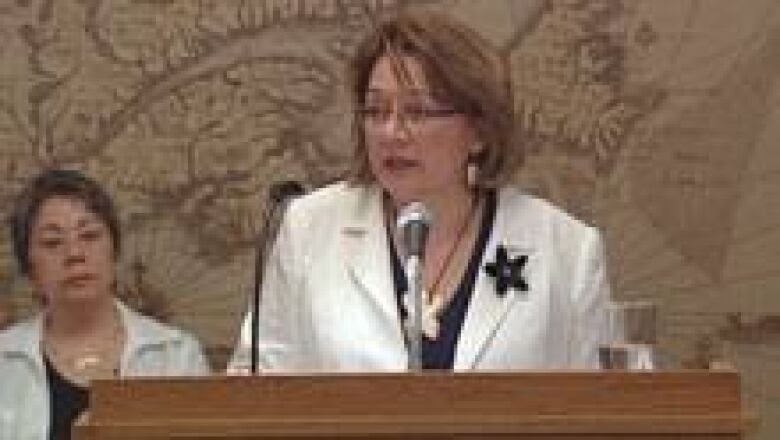Canada's Inuit leaders unveil education strategy
Canadian Inuit leaders have issued a national education strategy that aims to raise graduation rates among young Inuit, only a quarter of whomfinish high school.
The National Strategy on Inuit Education calls for more Inuktitut language use in schools, and recommends that Inuit parents get more involved in their children's education.
"This strategy is a blueprint for the education system that we want," Mary Simon, president of the national Inuit organization Inuit Tapiriit Kanatami, told reporters Thursday in Ottawa.
Simon, who chaired the committee that developed the strategy, said formal education was foisted on Inuit through Canada's residential school system during much of the 20th century.
But given that Prime Minister Stephen Harper formally apologized in 2008 for the residential school system's impacts on aboriginal children, Simon said Inuit must work on making today's education system better for Inuit.
"We need to do much more to get the graduation rates up," Simon said.
"The objective of this strategy is nothing less than to graduate children confident in the Inuit language and culture, and capable of contributing with pride to the emerging opportunities in Canada's Arctic."
Graduation rates an issue
Roughly 75 per cent of Inuit children in Canada including those in Nunavut, the Northwest Territories, northern Labrador and northern Quebec do not complete high school, according to the strategy report, which was released on Thursday.

"Many who do [complete high school] find that their skills and knowledge don't compare to those of non-aboriginal graduates," the strategy report states.
The education strategy aims to graduate more Inuit youth who can speak the Inuit language, as well as English or French. There has recently been a 12 per cent decline in the use of the Inuit language in the home, said Alexina Kublu, Nunavut's languages commissioner.
The education strategy makes 10 recommendations, such as hiring more bilingual educators and creatinga curriculumthat incorporates Inuit culture and history, as well as standardizing the Inuktitut writing system and improving services for students with special needs.
It also calls for a public campaign to promote the importance of children staying in school and the role parents have in their children's educational success.
Simon said the federal government should provide support in implementing the education strategy in Canada's Inuit regions.
"I call on Prime Minister Stephen Harper to fulfill the words of his Speech from the Throne, to make Canada's North a cornerstone of his agenda," she said.
The next step, Simon said, is to create an action plan and secure funding to implement the strategy.












_(720p).jpg)


 OFFICIAL HD MUSIC VIDEO.jpg)
.jpg)



























































































